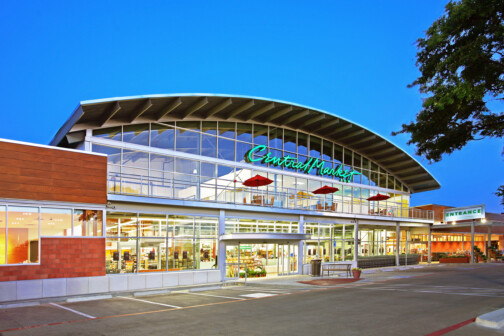
For more than 50 years, Downtown Dallas Inc. has been a principal advocate, champion, and steward of our great city’s downtown. As the nonprofit devoted to stimulating a vibrant and sustainable downtown environment, we are currently updating the Downtown Dallas 360 plan (360) in close partnership with the City of Dallas. 360 is our strategic plan for the forward movement of Dallas’ urban center that defines a collective vision for our future and addresses economic development, housing, public space, urban design, and mobility.
Through this process of updating 360, we are engaging a multi-layered stakeholder base, including residents, large employers, small businesses, and a multitude of organizations, agencies, and neighborhood groups working toward the betterment of downtown Dallas. In addition, we are assessing both formal and informal planning efforts within the 360 study area (approximately a two mile radius from the Central Business District). What we are learning suggests a strong alignment between the growth of Dallas ISD and the priorities of our urban constituents. To that end, we applaud recent action by Trustees to place the 2015 bond package on the November 3 ballot, and commit to raising awareness among downtown residents and business interests as to the importance of this measure.
We cannot overstate the importance of robust neighborhood schools. Intrinsically, everyone knows this is true, with local impacts and nationwide studies that underscore the extent to which the benefits extend to all of us. Yet what is often not as well understood is the growth of downtown into a true neighborhood. In the late 1990s, the core of downtown was home to fewer than 200 residents. Today, that number has reached nearly 9,000, with more than 44,000 living within the 360 study area. This greater downtown area, comprising Dallas’ urban center, is growing more rapidly than any other part of the city, and is Dallas’ most ripe area of opportunity to increase density and grow the overall tax base, a benefit to all citizens. Yet the number of public schools servicing the downtown area has actually decreased.
It is imperative to our ability to attract and retain a growing residential base that we establish great neighborhood schools. We are observing two phenomena that are increasing the number of families downtown. First, many of the “young professional” pioneers who began moving into Dallas’ urban center a decade ago are maturing into a family demographic. They are getting married and having children, and from our outreach through 360, we hear that they desire to remain downtown if the infrastructure is present to support their families. However, demographic analysis based on current and projected census data for both Uptown and the CBD shows a sharp decline, by more than 40 percent, in the number of children in the 5-13 age bracket when compared to the 0-4 age bracket. It does not rise again until age 25, making it apparent that once children reach pre-K and Kindergarten, families are leaving.
In addition, as Dallas attracts companies from outside of the region like Active Network, Omnitracs, and Santander (together adding nearly 5,000 new jobs downtown), many of these new employees will prefer to live close to work, but are faced with schooling challenges. Furthermore, the greater downtown area remains the largest employment center in North Texas; imagine if these employees had options for schools close to work and the ability it would give to attract and retain talent for Dallas.
Finally, the City of Dallas Neighborhood Plus plan rests on holistic neighborhood development as the foundation of growing the city. It presents strategies for complete neighborhood development, of which quality, accessible housing, and education are pivotal. National best practices tell us:
Neighborhood Schools Promote Student Learning: Neighborhood schools promote a sense of safety and security by being visible and active locations for children and families (Blank et al., 2003; Cuningham Group, 2002). Neighborhood interactions from students walking and bicycling to school encourages students to experience their community actively, which improves the learning environment and creates opportunities for better educational outcomes. Additionally, schools near neighborhood centers provide opportunities for hands-on learning, field trips, speakers, and community-oriented service (Council of Educational Facility Planners International, 2004). They also encourage stronger parental involvement because of easier access, which has been shown to improve educational outcomes for students (Blank et al., 2003).
Neighborhood Schools Make Economic Sense: At the macro level, high levels of educational attainment are a key indicator of a city’s economic competitiveness and success. The most successful cities in terms of job attraction, wages, and quality of life are those that have a highly educated workforce. Proving good neighborhood schools provide a pathway for more people to advance socioeconomically and contribute to the overall success of the city.
Good schools broaden the market for real estate in any given location. Many downtowns suffer from a lack of socioeconomic and age diversity. Young people move to the suburbs when they have children for perceived better schools and more housing space. Good neighborhood schools can keep some of these people in the neighborhoods and in downtowns as they grow their families. As these residents enter peak earning years, they can provide additional economic stimulus. If more residents can be attracted and retained, it will broaden the market for urban housing beyond young people and empty nesters.
It is well documented that good schools are a major driver of property values (Lyson, 2002; McClelland and Schneider, 2004). Higher property values will stimulate additional reinvestment in neighborhoods. 360 will include strategies to diversify housing product and price point as countermeasures to the increase in demand and costs in order to maintain affordability and a “middle class.” Rising property values can be leveraged to fund additional neighborhood amenities and needs including affordable housing.
Neighborhood Schools are an Integral Component of Cohesive and Inclusive Communities: DDI has heard through multiple layers of community involvement throughout our 360 process that neighborhood schools that are walkable and academically rigorous are necessary to attract families. In addition to the central of downtown Dallas, neighboring districts like Deep Ellum, Uptown, Cedars, and South Side have all identified the need for schools, both to attract and retain younger families that desire nearby schools. People make decisions on where they live based on what amenities are important to them. It is clear through our public process that the key to strong, in-demand neighborhoods is access to quality education.
Schools also strengthen community pride and identity, engagement of citizens and students in school, and community service (Council of Educational Facility Planners International, 2004). Whether that is a suburban location or located in Downtown Dallas, schools are often one of the few unifying factors in economically and racially diverse neighborhoods.
Neighborhood Schools Attract Talent: The median age is lower in Dallas than in the region, Texas, and the rest of the U.S., and the gap is widening. Many young adults are moving into the urban core and its surrounding neighborhoods such as Victory Park and Uptown to take advantage of the proximity to amenities they value. The rapid development Downtown and in these surrounding areas reflects this trend. The Neighborhood Plus Plan notes that many of these individuals will leave Dallas as they age and start families. Nearby quality education options are part of the strategy to retain these residents. This not only sustains the vitality of the city and Downtown, but also further attracts new young, energized residents and associated investments.
Neighborhood Schools are Healthy: Neighborhood schools provide opportunities to improve individual and environmental health. Living close to school increases student opportunities for everyday physical activity through walking or biking, supporting active lifestyles that as the Surgeon General stated recently is needed when he unveiled his call to action to improve walkability in our communities to improve health and reduce obesity. Additionally, a 2004 study by the EPA suggested that neighborhood schools could generate 13 percent more walking or biking trips than schools built outside of a community. The same study showed broader community benefits, suggesting that neighborhood schools could generate 15 percent fewer auto emissions than schools built outside a community. Schools near community centers can improve everyone’s health and foster environmental stewardship (Council of Educational Facility Planners International, 2004).
Why Downtown?
FAIR School in downtown Minneapolis is an example of a school that successfully weaves itself into the fabric of a city’s urban core. Housed on top of a city-owned parking garage, the school serves students in grades K-3 and 9-12 and uses local organizations as laboratories of learning. Partnerships exist with businesses, the Downtown YMCA, the Minneapolis Downtown Rotary Club, the University of St. Thomas, MacPhail Center for the Arts, Orchestra Hall, the Minneapolis Downtown Library, Illusion Theater, the Hennepin County Government Center, Loring Park, and the historic Orpheum and State Theatres. The school does not have its own athletic or performance facilities; the YMCA and other nearby partners provide these spaces for students (Bingler et al., 2003). In downtown Dallas, successful examples of similar programs exist in Charter schools such as the Uplift system and Pegasus School for the Liberal Arts and Sciences. Dallas ISD’s own Booker T. Washington High School for the Visual and Performing Arts, and Middle College High School are additional examples of curricula driven by downtown as a living laboratory. However, a void exists in the availability of public pre-K-8 education in the Downtown area.
Strong schools are more than just buildings. They house opportunity by educating future generations of Dallas children to become the next major innovators, community leaders, artists, and scientists that will keep Dallas a leader in an ever-expanding and competitive world. We applaud efforts for Choice education and the opportunities this opens for Downtown families. In the long-term, however, the addition of walkable neighborhood schools is critical to the sustainability of our city’s urban core.
For all of the reasons outlined above, Downtown Dallas Inc. is in full support of the 2015 Dallas ISD bond program, and we are committed to supporting this message through November 3 and into implementation. Furthermore, if passed, we urge Trustees to prioritize the development of Downtown K-8 and pre-K programs, as outlined in section number four: “New Educational Programs: Construct or repurpose schools for new educational programs, including career technology, transformation schools, innovation schools, early childhood schools, and overage schools.” Our intown neighborhoods are growing now, making it imperative that we build a support system to keep families in Dallas.
The heart of our city—a series of distinct, bustling, urban neighborhoods—deserves great schools. Now go vote!





